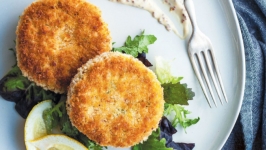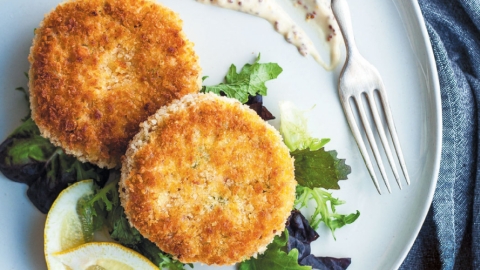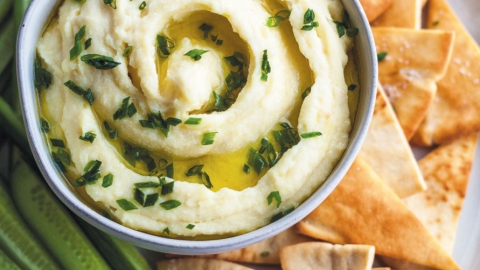Inspired By Chefs
How Philly’s Restaurants Make Me a Better Cook
I SHOULD HAVE KNOWN my career as a restaurant critic was drawing to a close when my interviews with the chefs changed. Readers don’t realize this, but following the meals that comprise most of the research that goes into a review, critics interview the chefs over the phone.
These talks can be tense; chefs know they’re being judged, after all. But at a certain point in my own time as a critic, my interviews became more collegial. I spent a short time asking the nuts-and-bolts questions for my review (Where do you source your sea bass? What inspires your daily specials?) and then moved on to what I really wanted to talk about: the recipes and techniques the chefs used to make my favorite dishes.
After one such conversation, I procrastinated writing my first draft by heading to my kitchen. This chef made some unusually wonderful pasta dishes, ravioli wrappers so delicate and thin you could see the herb-speckled ricotta filling from the outside.
He talked to me about the importance of kneading pasta dough by hand. He spoke poetically of the sensual experience of feeling the dough’s quality transform under the insistent weight of your palms, the pressure of the pads of your finger tips. It becomes velvety, he said. There’s a bounce to it. Supple, lively, lush. “It takes time, but you know it when you feel it.”
I don’t remember if he mentioned the word gluten, but I know now this is what the kneading process is all about. You knead to develop a strong network of gluten, the protein that allows you to stretch a dough transparently thin without rupturing it.
Working with the approximate ratio of egg to water to flour he mentioned, I went to work. I kneaded and kneaded. I hopped up on my kitchen counter to get better leverage. Time went by, hours it seemed, but in reality it was about 20 minutes. Then finally, it happened. The dough, as promised, changed in my hands and before my eyes. I covered it with plastic, let it rest and made some of the nicest pasta I’ve ever had at home.
Soon after, I began a different job as a recipe editor, working with chefs all over the country to adapt their recipes for home cooks. I took great pleasure and pride in this task. It was more aligned with my real passion: home cooking.
I still love restaurants, probably more than the average person. I still spend money like someone else is covering the cost (they’re not), over ordering because I want to taste everything, afraid I’ll miss the best or most interesting dish. But the thing I like best is not what transpires at the restaurant table. It’s what I bring back to my own home kitchen that is most delicious to me—ideas. A lot of the recipes I have created for publication started as something I ate at a restaurant.
This summer, after a disappointing plate of crab cakes at a restaurant down the shore, I ordered crab cakes at Noord the night I got back from my trip. Noord is located steps from my home, and it’s a place I return to both out of laziness and because the food is reliably excellent. The crab cakes on special that night weren’t just any crab cakes: They were mustard-crusted crab cakes.
Chef and owner Joncarl Lachman draws his inspiration from Northern Europe, where mustard plays a prominent part in the flavor profiles. Many of his dishes are accented with zingy whole-grain mustard. The salty, bright tang of the mustard complemented the sweet crab in a way I wanted to enjoy again as soon as possible.
Back in my own kitchen, the reality is I rarely use crab. Cooking whole live crabs and then extracting the meat is tedious, messy and time consuming. Alternatively, most canned crab is both expensive and disappointing. Instead of trying to make crab cakes, I took that mustardy inspiration and applied it to salmon cakes, a homier but still delicious dish that starts with the convenience of canned salmon. These mustardy salmon cakes are no match for Lachman’s incredible crab cakes, but they are a fast and easy homage to one of my favorite restaurant meals of 2018.
“The thing I like best is not what transpires at the restaurant table. It’s what I bring back to my own home kitchen that is most delicious to me—ideas.”
Restaurants also remind me of classic dishes that I love but, for whatever reason, have never made at home. Every time I visit Kanella Grill, I order the “dips of the day,” a rotation of three Greek spreads that usually includes skordalia, a silky, garlicky paste made from potatoes, almonds and olive oil.
It’s so creamy that I was surprised to learn there is no dairy in the recipe—the richness comes from blending the nuts with water and olive oil. Some people call skordalia “Greek mayonnaise,” and it’s easy to imagine using it as a sub for that divisive condiment, though I prefer it served like hummus, as a dip with pita wedges and vegetable spears.
Sometimes restaurants make me bold and ambitious. That’s the case with Spice Finch, whose Mediterranean-inspired menu is stacked with vegetable-centric dishes I immediately wanted to recreate. Chefs Jennifer Carroll and Billy Riddle are cooking food that is more like what they like to eat at home (the couple is engaged) than the rich French food that Carroll, familiar to food fans from her time on Top Chef, is best known for.
The Spice Finch dish I couldn’t stop thinking about was broccoli tabbouleh. Tabbouleh is a salad traditionally made with herbs and bulgur wheat. Carroll and Riddle decided to sub finely shredded broccoli for most of the herbs and quinoa for the bulgur. I had to know more about how this dish was made, what went into the alluring blend of spices and where the rich, tangy notes came from, if not from cheese. (My server explained that the dish was both vegan and gluten free.)
So I made like a restaurant critic and interviewed Carroll and Riddle for this very essay. The recipe you’ll see here is simplified from the way they do it in the restaurant, with fewer ingredients and none of the hard-to-find Aleppo pepper that goes into Spice Finch’s version. I learned the creaminess that reminded me of feta actually came from a tahini sauce.
Carroll and Riddle told me that the salad keeps well over several days in the refrigerator and is great as a side dish for chicken or fish—all true. I found myself eating it straight out of the container on my lunch break. Hardly the same ambience as the Spice Finch dining room, but I’m happy to have my own home-cook-friendly recipe for it to share with you.
Food enthusiasts often filter into two camps—there are the restaurant aficionados on one side and the home-cooking evangelists on the other. This divide is even more pronounced among food writers, with cookbook authors in their corner and restaurant- focused journalists in another.
The most avid home cooks often view dining at restaurants as a waste of money. Why pay such a premium for something you could cook better, with more love, at home? Meanwhile, the restaurant cheerleaders tend to see those who eat in every night as missing out on the luxury, variety and excitement of letting the professional chefs make dinner.
I see it both ways. Every week, I make meals from scratch and eat at restaurants, too. I still talk to chefs every chance I get about how they do what they do. And I find if I stay away from restaurants too long, I lose my verve in the kitchen. My idea well runs dry. At the same time, nothing makes me hungrier for home cooking than too many nights out in a row. I know I’m very lucky to have a household budget flexible enough to let me have these kinds of food whims.
At the end of my career as a restaurant critic, I felt like I’d never want a reservation again. I was burnt out on tasting menus, wine pairings and uni. I’m still over wine pairings and uni, but today I know that splurging on restaurant meals makes me a more inspired and skilled home cook—one who keeps learning.












